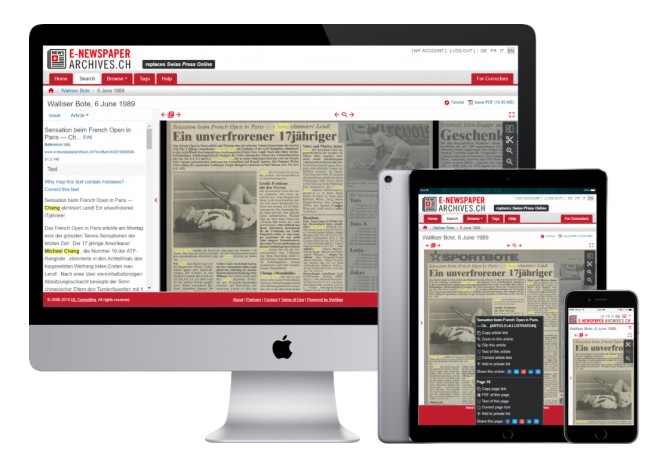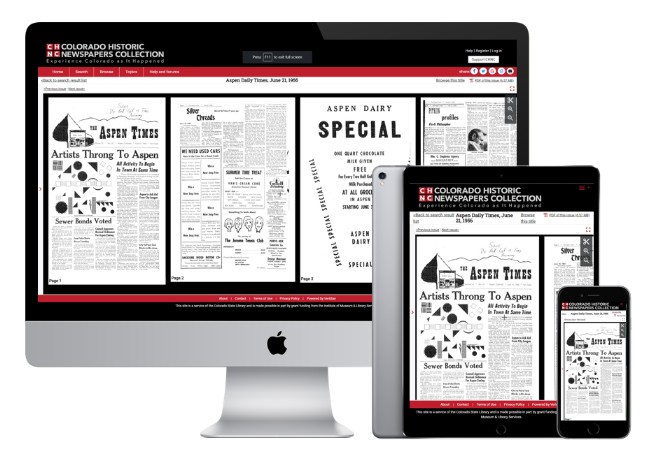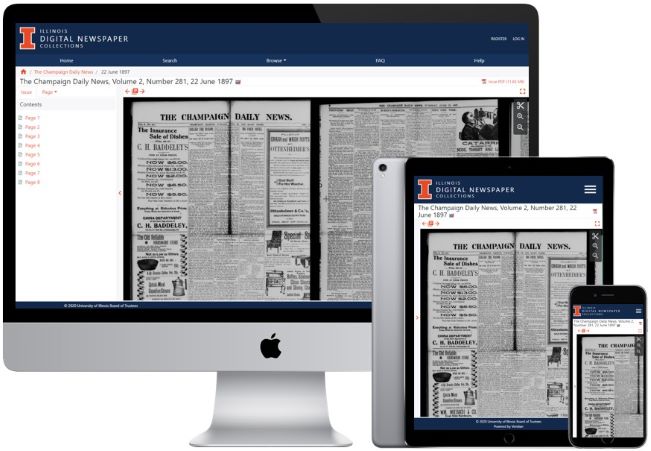In recent years we’ve had enquiries from State, National and University Libraries - looking to migrate their digital collections from Olive Software to the Veridian platform.
Having successfully completed three of these projects, and about to embark on a fourth, we thought it would be helpful to explain the motivation behind them and the process involved.
We hope that libraries considering a similar migration project might be encouraged by the simplicity of the process and the considerable improvements possible for their collections.
Why make the shift? For the library and its patrons
Veridian caters specifically to libraries, with a focus on those managing large collections of digital newspapers. These special archives require a presentation platform which will evolve to meet the needs of the collection and its user community over time.
We continually add new features to Veridian and maintain close contact with our customers to learn what is needed to best serve their collections. Veridian features such as article segmentation, full text searching, date browsing, crowd sourced OCR correction, and the ability to tag and comment on articles are just a few of the popular additions.
Along with enhanced functionality for users, another key motivator for migration is the benefit to the library. Veridian gives the ability to quickly and easily update new content. Strong features for end-user engagement and proper indexing for Google and major search engines mean busier collections.
“As a result of the library’s migration to Veridian, all of its digitized newspapers became available in a single user portal, and it found a dramatic spike in usage.” *
Veridian is also built specifically to support digital objects in the METS/ALTO standard. This is well established as the industry standard for newspaper digitization projects. By converting source data from a proprietary format to METS/ALTO, a library is no longer tied to a single vendor. In addition, the quality of the segmentation is greatly improved because the source data is more comprehensive.
In summary, migrating to Veridian can ensure the sustainability of a library’s digital newspaper repository infrastructure, while meeting the needs of both the institution and its patrons.
The 3 step migration process
There are three main steps within a migration project, and depending on the size of the collection, the entire migration process typically takes 6 months to complete. Veridian engineers work closely with our customers at every stage to ensure things are done correctly. Below is a breakdown of the steps:
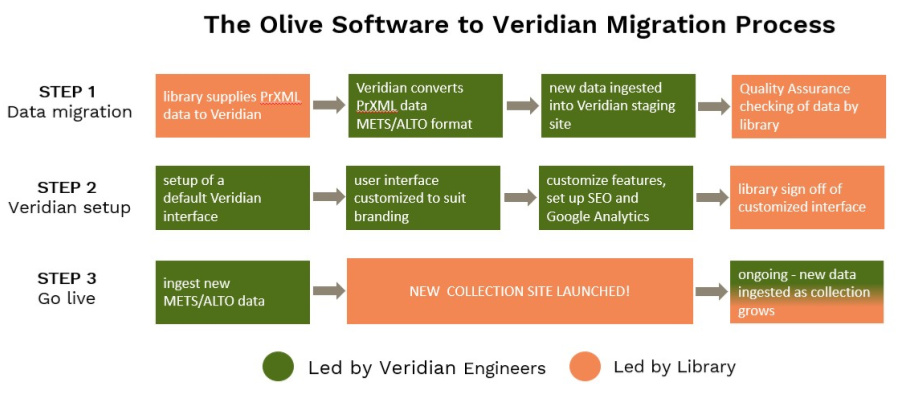
STEP 1 - Olive Software Data Migration
To begin, the library supplies the existing Olive Software PrXML data to Veridian. We then convert it to the METS/ALTO format using a programme we developed for this purpose.
As there is no need to re-create METS/ALTO data from the source images, the cost to convert the data is not prohibitive.
The conversion may be performed on the library’s server to avoid unnecessary data transmission and reduce the chance of data corruption during the transmission.
The complete batches are then ingested into the Veridian system on a staging site for quality checking by the library.
STEP 2 - Veridian Setup and Customization Service
The next step is to set up a Veridian instance, and customize it with the features and branding requirements of the library.
Every digital collection is unique, and its presentation should reflect the content and the library or cultural heritage institution it belongs to. During this step we work with the customer to customize the user interface with their design and style guidelines as needed. Some different examples of the Veridian user interface in action can be seen here.
Then we set up the Veridian searching and browsing and user engagement features to maximise the collections accessibility. We can also alter existing features to fit the needs of the library.
Finally we set up SEO (Search Engine Optimization) to maximize the collection’s exposure and Google Analytics to help analyze visitor information and generate traffic reports.
STEP 3 - Site launch and future growth
Once the data conversion and Veridian setup/customization are completed it’s time to ingest the METS/ALTO collection data and launch the live site. For a 3 million page collection this entire process will usually take 6 months. For smaller collections of 100,000 pages it would take less than a month.
As many digital collections continue to grow after the migration project is complete, we also make a plan to work collaboratively with the library for ingesting future data quickly and easily.
This involves arranging scanning and data conversion, ingesting the new data, batch quality assurance and live site ingestion. This workflow soon becomes a familiar process to follow when new content needs to be added to the collection.
Conclusion
We hope this article sheds some light on the process for migrating a digital collection from Olive Software to Veridian. If you are considering a migration project please feel free to get in touch for advice from our engineers.
For further inspiration you might also like to read case studies for some other Olive Software to Veridian migration projects. See links at the bottom of this page.
Examples of Olive to Veridian Collections
Swiss National Library - E-newspaper archives.ch https://www.e-newspaperarchives.ch
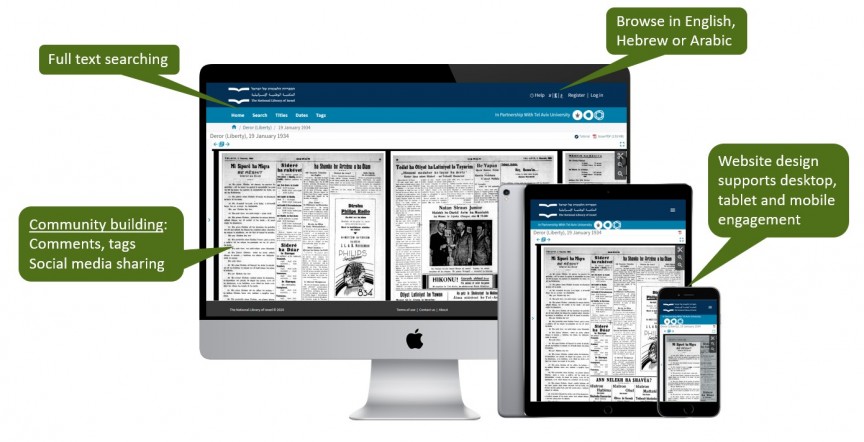
National Library of Israel - https://www.nli.org.il/en/newspapers/
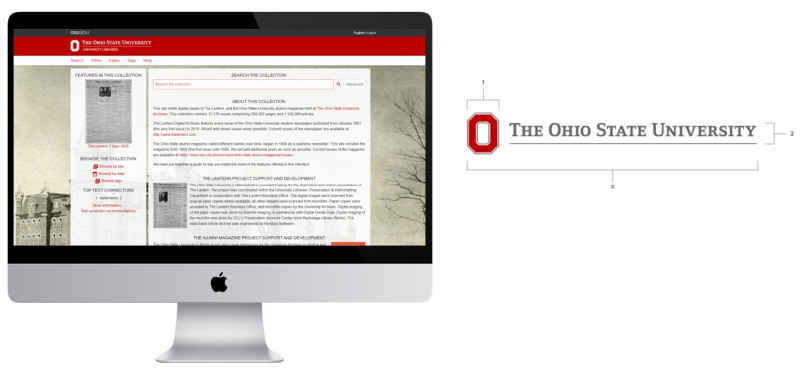
Ohio State University - The Ohio State University Newspaper Archives https://osupublicationarchives.osu.edu
Colorado State Library - Colorado Historic Newspapers Collection https://www.coloradohistoricnewspapers.org
University of Illinois at Urbana-Champaign - Illinois Digital Newspaper Collections https://idnc.library.illinois.edu/
*Reference: Providing Access to Digitized Newspapers: A Case Study from the University of Illinois at UrbanaChampaign Library A report by Kyle Rimkus and Kirk Hess (2014)

